Abstract
An experimental animal model for testing antibiotics in vivo against Fusobacterium (Sphaerophorus) necrophorum has been developed. It incorporates the subcutaneous injection of the bacteria into mice followed by intraperitoneal administration of the antibiotic at 24, 48, 72, and 96 h. Mean effective dose values are based on the number of survivors 21 days after challenge. Tetracycline was the most effective drug tested, with a mean effective dose of 5.0 mg/kg, compared with mean effective dose values of 11.1 for clindamycin, 11.8 for penicillin-G, and 52.9 for lincomycin.
Full text
PDF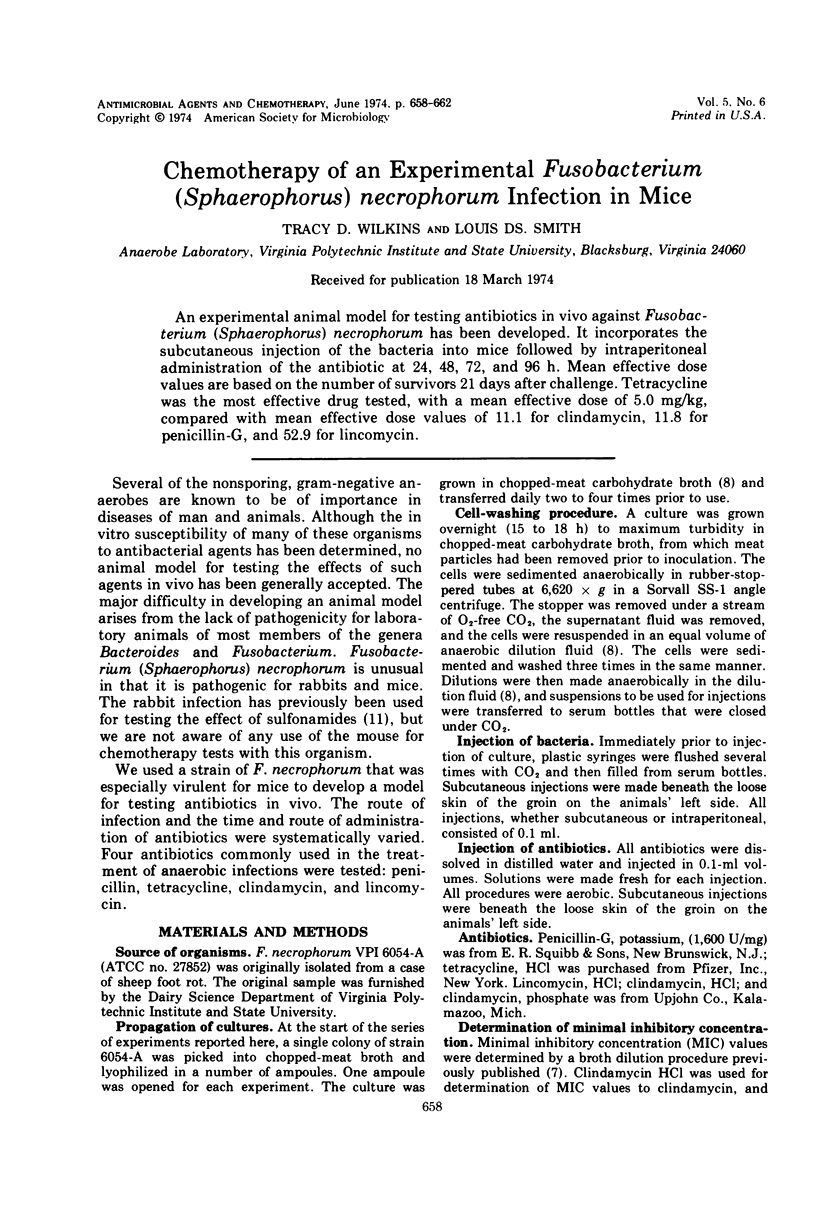
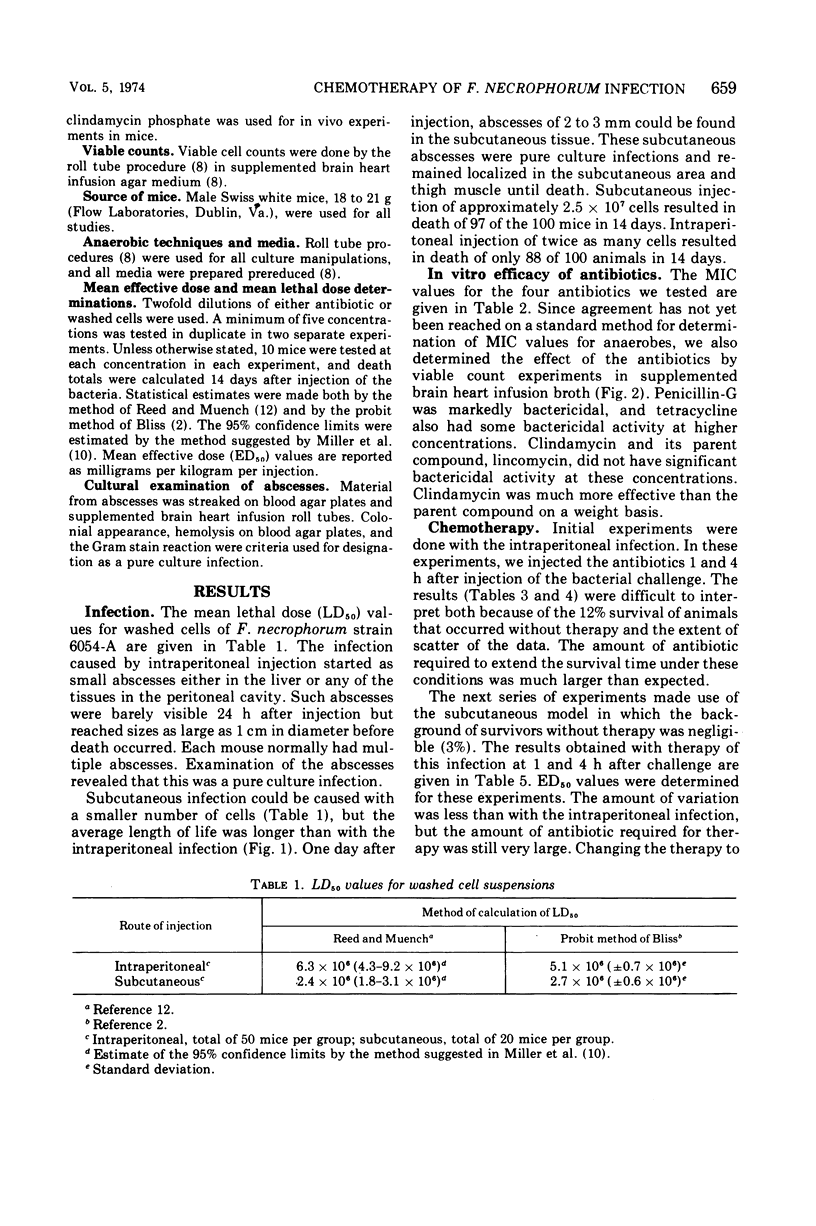
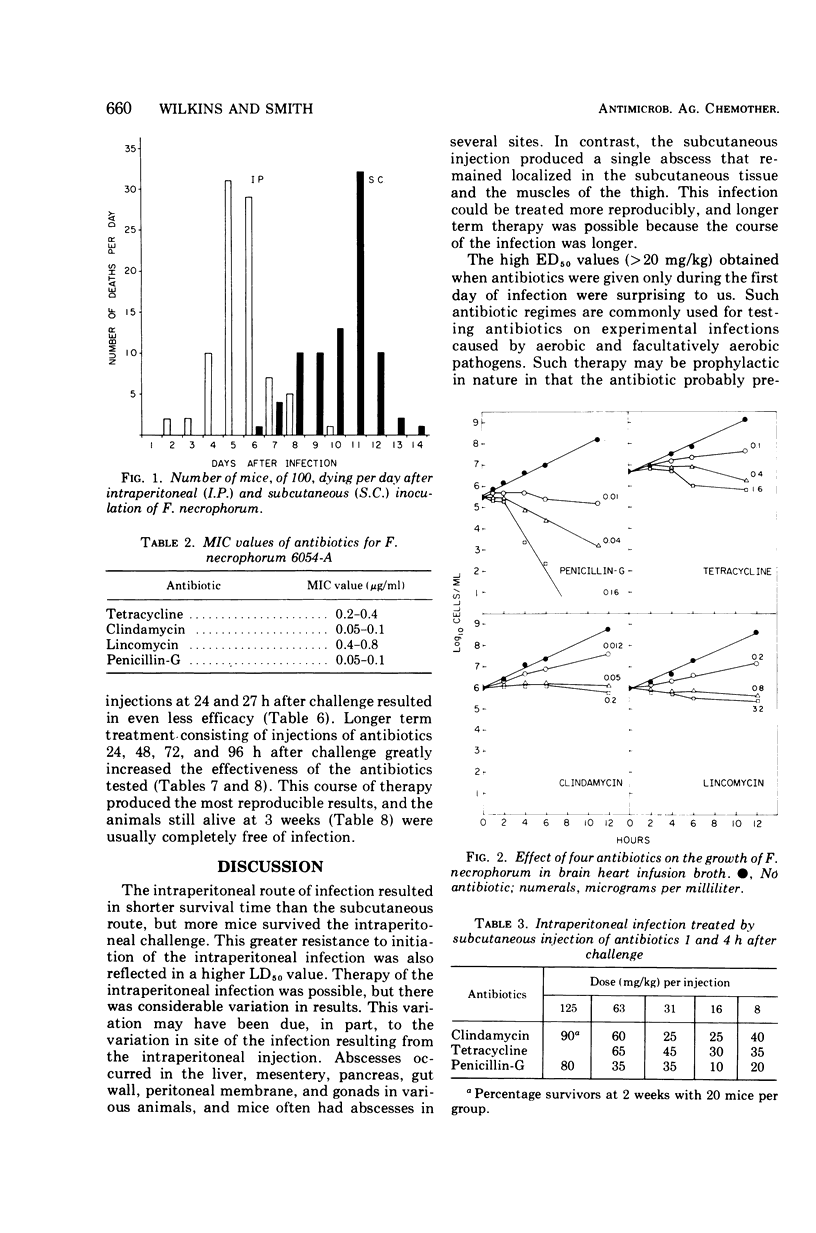
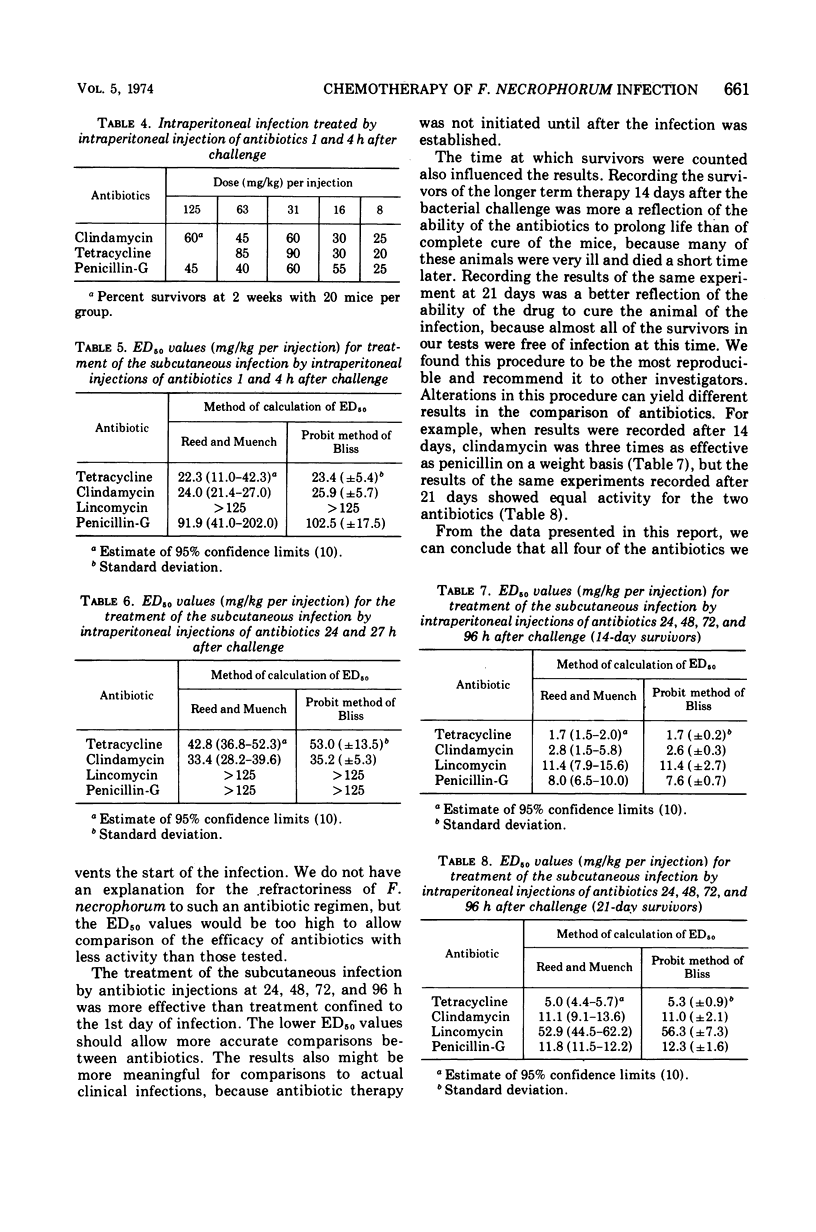
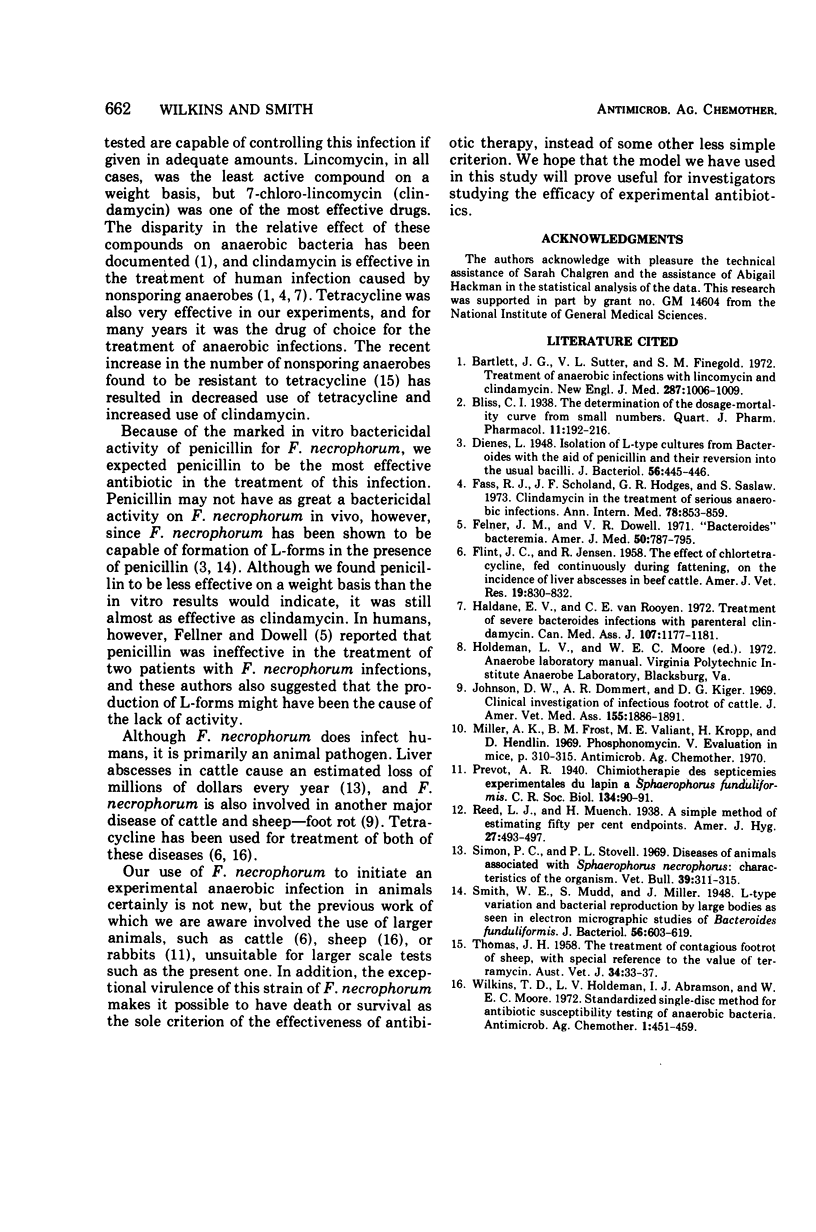
Selected References
These references are in PubMed. This may not be the complete list of references from this article.
- Bartlett J. G., Sutter V. L., Finegold S. M. Treatment of anaerobic infections with lincomycin and clindamycin. N Engl J Med. 1972 Nov 16;287(20):1006–1010. doi: 10.1056/NEJM197211162872002. [DOI] [PubMed] [Google Scholar]
- Dienes L. The Isolation of L Type Cultures from Bacteroides with the Aid of Penicillin and Their Reversion into the Usual Bacilli. J Bacteriol. 1948 Oct;56(4):445–456. doi: 10.1128/jb.56.4.445-456.1948. [DOI] [PMC free article] [PubMed] [Google Scholar]
- FLINT J. C., JENSEN R. The effect of chlortetracycline, fed continuously during fattening, on the incidence of liver abscesses in beef cattle. Am J Vet Res. 1958 Oct;19(73):830–832. [PubMed] [Google Scholar]
- Fass R. J., Scholand J. F., Hodges G. R., Saslaw S. Clindamycin in the treatment of serious anaerobic infections. Ann Intern Med. 1973 Jun;78(6):853–859. doi: 10.7326/0003-4819-78-6-853. [DOI] [PubMed] [Google Scholar]
- Felner J. M., Dowell V. R., Jr "Bacteroides" bacteremia. Am J Med. 1971 Jun;50(6):787–796. doi: 10.1016/0002-9343(71)90187-2. [DOI] [PubMed] [Google Scholar]
- Haldane E. V., Van Rooyen C. E. Treatment of severe bacteroides infections with parenteral clindamycin. Can Med Assoc J. 1972 Dec 23;107(12):1177–1181. [PMC free article] [PubMed] [Google Scholar]
- Johnson D. W., Dommert A. R., Kiger D. G. Clinical investigations of infectious foot rot of cattle. J Am Vet Med Assoc. 1969 Dec 15;155(12):1886–1891. [PubMed] [Google Scholar]
- Miller A. K., Frost B. M., Valiant M. E., Kropp H., Hendlin D. Phosphonomycin. V. Evaluation in mice. Antimicrob Agents Chemother (Bethesda) 1969;9:310–315. [PubMed] [Google Scholar]
- Smith W. E., Mudd S., Hillier J. L-Type Variation and Bacterial Reproduction by Large Bodies as Seen in Electron Micrographic Studies of Bacteroides funduliformis. J Bacteriol. 1948 Nov;56(5):603–618. doi: 10.1128/jb.56.5.603-618.1948. [DOI] [PMC free article] [PubMed] [Google Scholar]
- Wikins T. D., Holdeman L. V., Abramson I. J., Moore W. E. Standardized single-disc method for antibiotic susceptibility testing of anaerobic bacteria. Antimicrob Agents Chemother. 1972 Jun;1(6):451–459. doi: 10.1128/aac.1.6.451. [DOI] [PMC free article] [PubMed] [Google Scholar]


